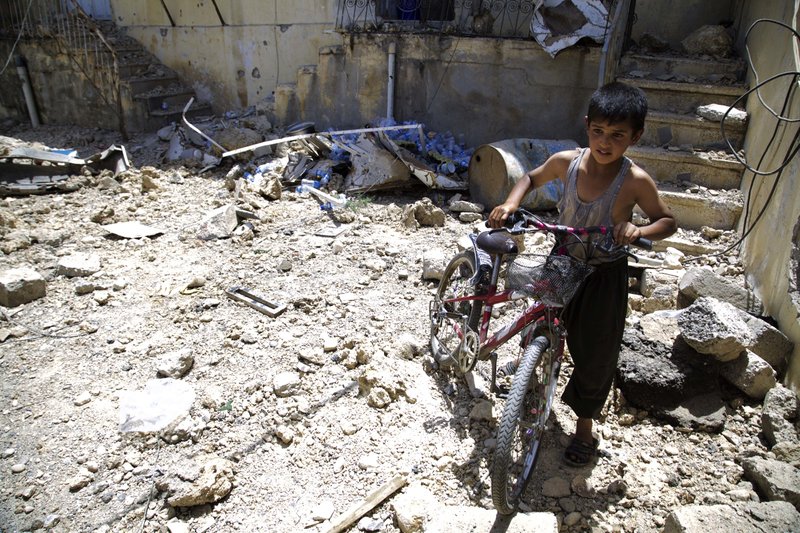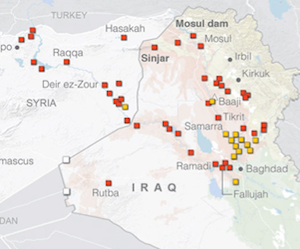MOSUL, Iraq -- Large numbers of civilians are being killed and injured in western Mosul because Iraqi and U.S.-backed coalition forces are relying on heavy weapons as they struggle to push Islamic State group militants from the city, human-rights organizations warned.
RELATED ARTICLES
http://www.arkansas…">Tillerson urges letup on Qatar http://www.arkansas…">Kurds' role cited in Iran attacks
Heavy ordnance, such as 500-pound air-delivered bombs, are causing excessive and disproportionate damage to civilian life and property, which is prohibited under international humanitarian law, organizations including Human Rights Watch, Amnesty International and the Center for Civilians in Conflict warned.
Their combined report released Thursday also pointed to the use of artillery systems, including heavy mortars and locally fabricated rocket launchers, that lack a guidance mechanism, and are therefore inherently imprecise and indiscriminate.
Backed by the U.S.-led international coalition, Iraq last October launched a wide-scale military offensive to recapture Mosul and the surrounding areas. The city's eastern half was declared liberated in January, and the push for the city's western section, separated from the east by the Tigris River, began the following month.
The use of powerful and often inaccurate weapons is a troubling practice because a very large number of civilians -- as many as 180,000, according to the United Nations -- remain in the Islamic State-controlled areas of the city, now little more than 1.5 square miles. The situation is made more difficult by the Islamic State's practice of using civilians as human shields and stopping people from leaving.
Many of the recently retaken areas of western Mosul are reduced to rubble, in some cases with entire families killed.
Amran Waabdullah Jumaa, 35, said his mother was killed on May 12 in an airstrike outside their house in the 17 Tammouz district. They buried her in the garden along with another woman who had died in the same strike.
"She was killed by these American smart bombs or whatever they call them," he said.
Ahmed Najim Abdullah, 27, a resident of the Zanjili district of western Mosul, lost three members of his family when their house collapsed on them after an airstrike. He was trying to dig the rest of them out from under the rubble when another rocket hit, injuring him in several places.
"It's well-known that the houses there are very old, the missiles weigh over [440 pounds], it hits the house, and when it hits one house, the next four or five houses will collapse with it too," he said in his hospital bed in Irbil.
Military analysts say that Iraqi and coalition forces rely on these weapons because they are trying to minimize their own casualties. According to a recent U.S. Defense Department report, Iraqi special forces have suffered a 40 percent casualty loss in Mosul so far.
The U.S.-led coalition estimates that its airstrikes unintentionally killed at least 484 civilians between the start of the Mosul campaign and June 2. Airwars, the United Kingdom-based nongovernmental organization that monitors airstrikes, believes that the number may be as high as 3,800. These numbers do not include the number of people who have been killed by artillery shelling, for which there is no reliable estimate.
A Section on 06/10/2017

